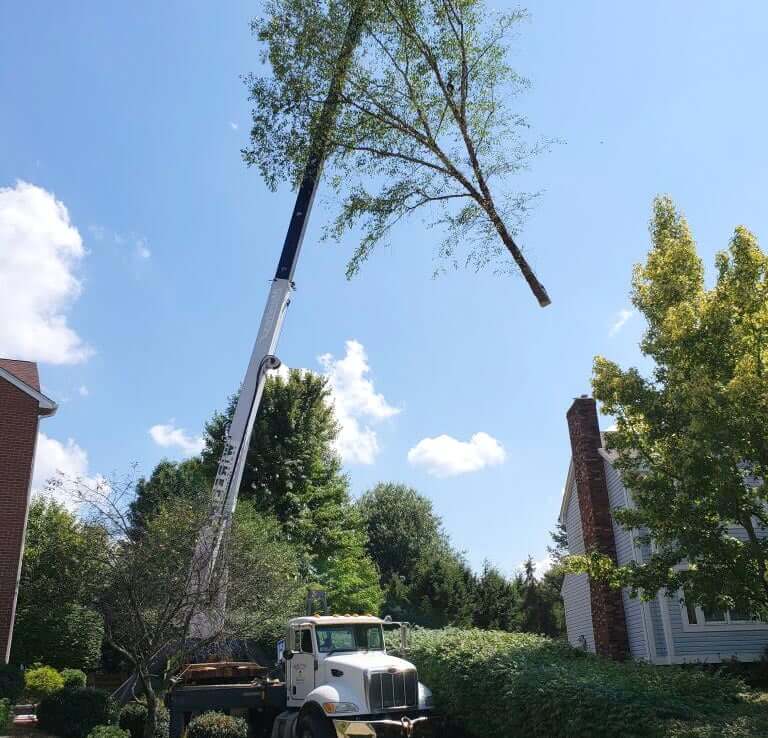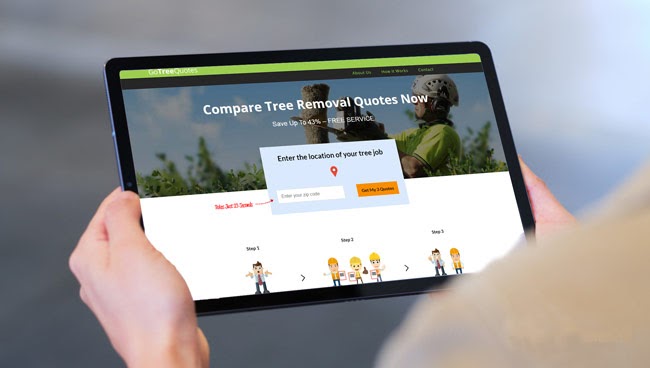Do you have a large tree in a tricky spot that requires removal? Crane-assisted removal might be exactly what you need. This method is for trees that are too big or too close to buildings, power lines, or other obstacles. Our certified arborists are knowledgeable in the use of cranes for safe and efficient job completion.

What we cover
ToggleWhy Should You Choose Crane-Assisted Tree Removal?
Here’s why you should consider crane-assisted tree removal:
- Improved Safety: Cranes significantly reduce the risk of damage to nearby structures, power lines, and vegetation by safely lifting tree parts.
- Access Tight Spaces: Cranes are ideal for areas that traditional equipment cannot access.
- Efficient Process: This method speeds up the tree removal process and reduces disruption to your property and daily activities.
- Minimal Yard Damage: Since the crane lifts the tree parts, there’s less impact on your lawn or driveway.
- Advantages Over Traditional Methods: Crane-assisted removal is quicker and less labor-intensive compared to traditional methods, reducing environmental impact and providing a safer, more efficient alternative.
What Makes Crane-Assisted Tree Removal Unique?
Crane-assisted removal works well for trees that are hard to reach or in risky locations. Using a crane allows arborists to control each segment of the tree as it’s removed, so there’s less risk of property damage. The crane can reach high or tight spots, making it ideal for trees that other methods can’t handle.
With this method, arborists carefully break the tree into smaller pieces and lower them with the crane. This keeps everything under control and ensures the job is done safely.
Safety Protocols for Crane-Assisted Tree Removal
We take safety seriously. Our arborists follow these strict safety protocols:
- Pre-Job Assessment: We check the area and identify any risks before starting the job.
- Proper Equipment: We use only well-maintained cranes and tools, inspected regularly.
- Certified Operators: Only certified crane operators and arborists handle the job, ensuring the crane operator and tree climber coordinate effectively for safe and efficient tree removal.
- Clear Communication: Our team stays in constant communication to make sure everything runs smoothly.

FAQ's
Crane-assisted tree removal involves using a crane to lift and move tree parts, especially when the tree is large or difficult to access. This tree removal process ensures a safe and controlled removal.
Crane-assisted tree removal is ideal for large trees or those located in hard-to-reach places, such as near power lines or buildings. It’s also useful when needing to access trees on steep slopes or densely vegetated regions.
During the removal process, arborists cut the tree into smaller sections. A crane then lifts and moves the tree parts safely, lowering them to the ground with precision to avoid damage to your property.
Yes, crane-assisted tree removal is safe when performed by a professional tree removal service with certified arborists and crane operators. We follow strict safety protocols to minimize risks to property and ensure the safety of everyone involved.
Yes, cranes are designed for removing trees in areas that traditional equipment cannot access. This makes crane-assisted tree removal ideal for tight spaces, like between buildings or near power lines.
The cost of crane-assisted tree removal can run from $200 to $2,000 on average. The project cost depends on factors like tree size, location, and access. Go Tree Quotes offers free quotes, so you can get an accurate estimate for your specific tree removal job.
Traditional tree removal methods often cause significant property damage due to extensive digging and rigging. In contrast, crane-assisted tree removal is designed to minimize property damage. Arborists use the crane to carefully lower tree parts, ensuring minimal disruption to your yard, driveway, or nearby structures.
Our certified professionals specialize in advanced tree services, including crane-assisted tree removal. We ensure that even the most complex jobs are handled with precision and safety. With our commitment to customer satisfaction, eco-friendly practices, and competitive pricing, we make tree care simple and efficient.














